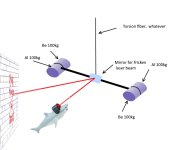ryan
Veteran Member
- Joined
- Jun 26, 2010
- Messages
- 4,668
- Location
- In a McDonalds in the q space
- Basic Beliefs
- a little of everything
This might actually be happening!
Can we use this as an energy source?
Make sure you read the whole thing.
https://www.technologyreview.com/s/...-anomaly-and-the-impossible-emdrive-thruster/
Can we use this as an energy source?
Make sure you read the whole thing.
https://www.technologyreview.com/s/...-anomaly-and-the-impossible-emdrive-thruster/


